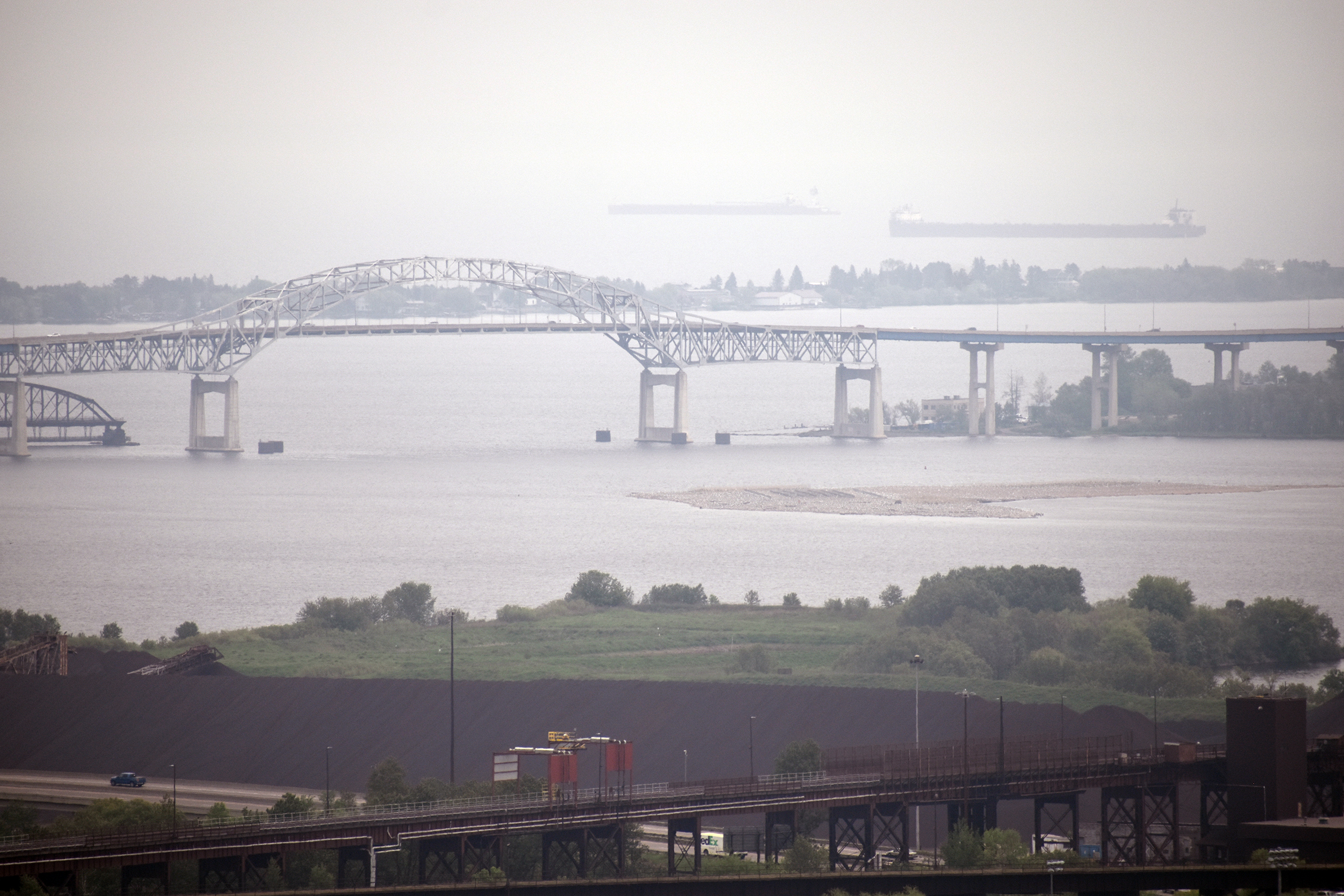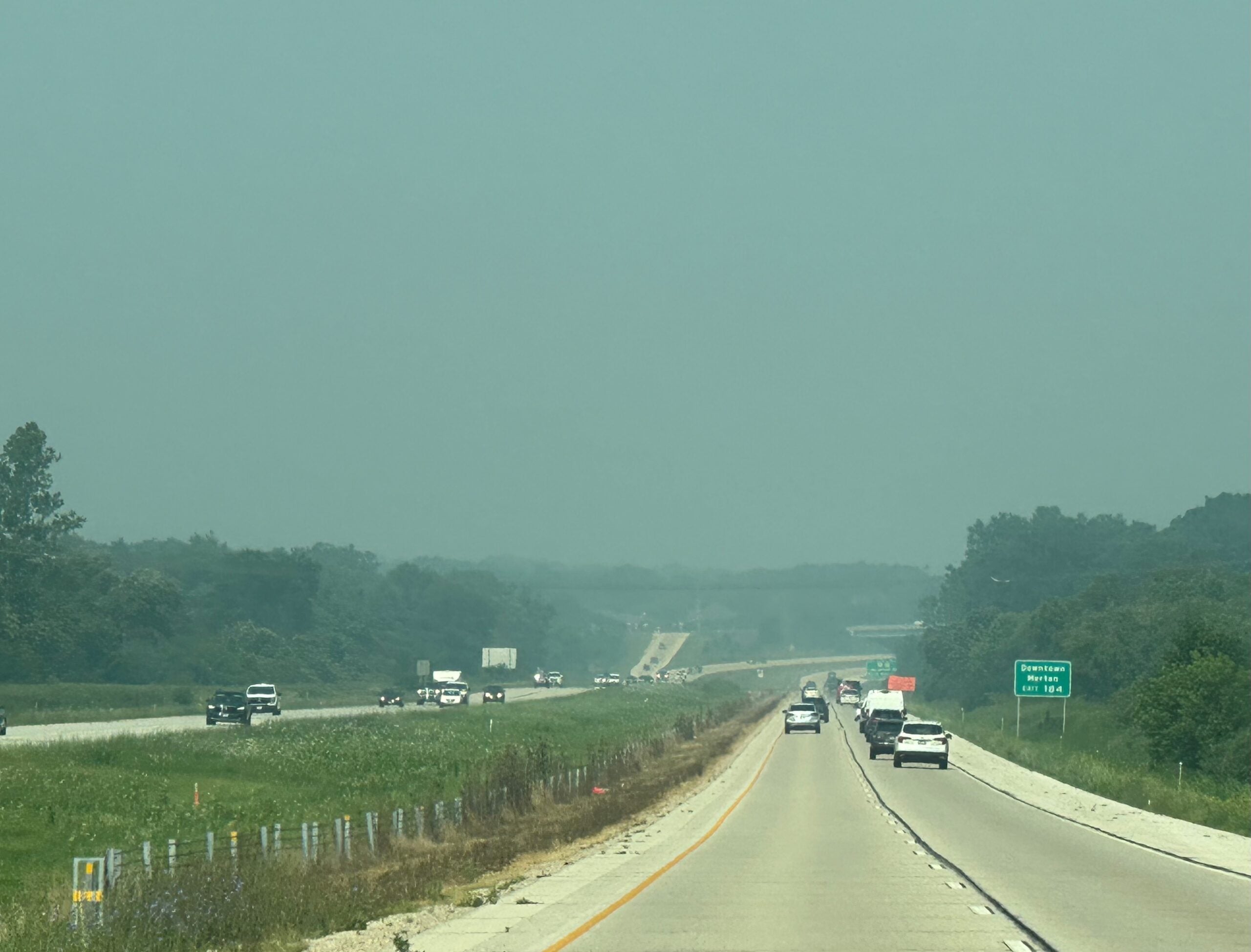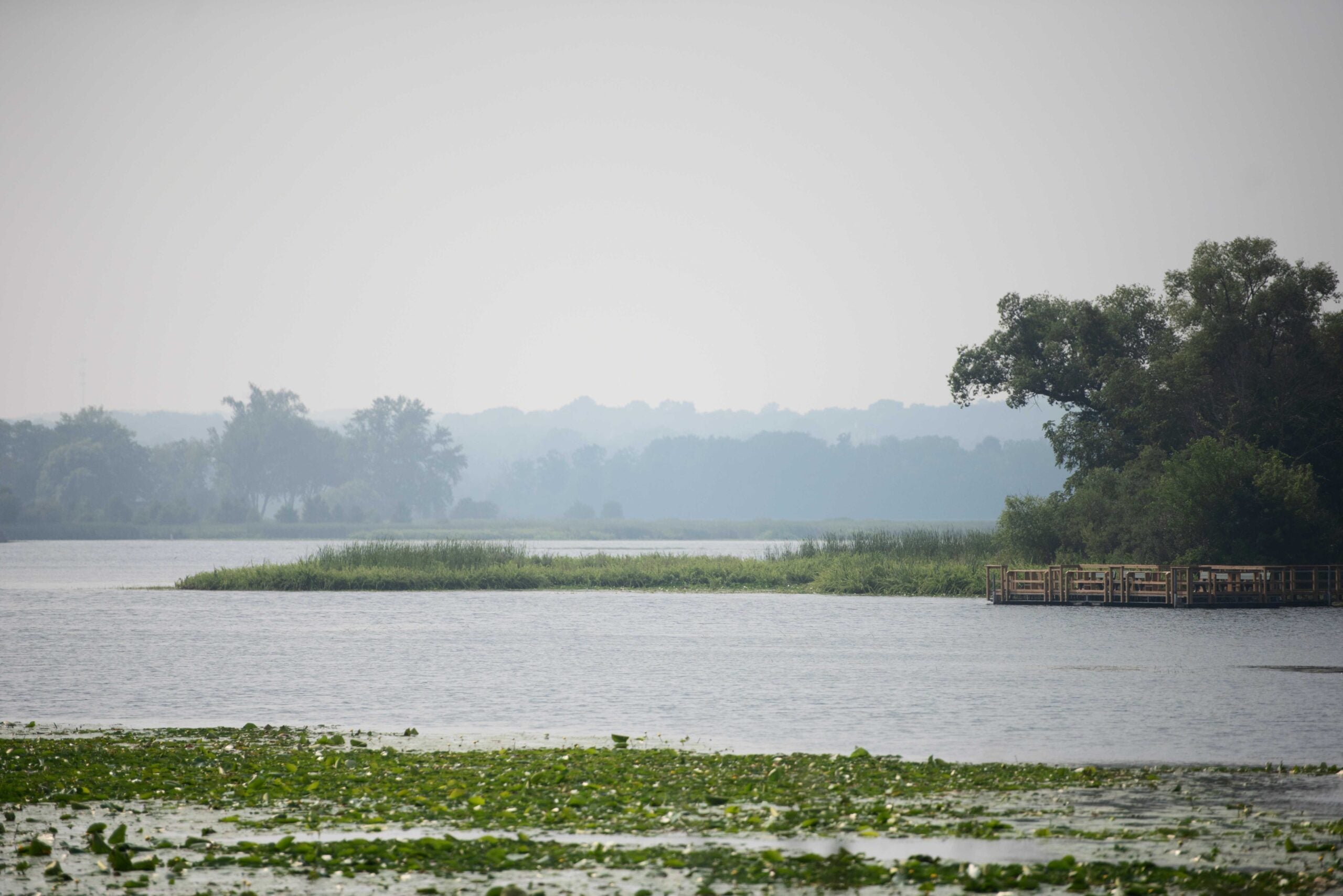More than half of Wisconsin is under an air quality alert for sensitive groups due to smoke from Canadian wildfires, marking the fifth such advisory this year.
The alert comes as the state is seeing its most active spring for fine particle pollution in more than a decade. The wildfires and subsequent smoke have underscored the role climate change is having on air quality and public health.
The Wisconsin Department of Natural Resources issued the air quality advisory Wednesday for particulate matter 2.5, or fine particle pollution. The alert went into effect at 8 a.m. and was set to remain in effect until noon Thursday across 41 counties spanning northern, west-central and central Wisconsin. On Thursday, the DNR issued another advisory that air would be unhealthy for either sensitive groups or the public at large across 54 counties in the southern two-thirds of the state that was set to expire at midnight on Friday.
News with a little more humanity
WPR’s “Wisconsin Today” newsletter keeps you connected to the state you love without feeling overwhelmed. No paywall. No agenda. No corporate filter.
The fires combined with north winds are carrying smoke down into the region placing those most vulnerable at risk from poor air quality, according to Craig Czarnecki, outreach coordinator for the DNR’s air management program.
An air quality advisory has been issued until noon on 6/15 due to wildfire smoke originating from Canada. (1/3) pic.twitter.com/elO0K8L6Mf
— Wisconsin DNR (@WDNR) June 14, 2023
“That means people with heart or lung disease, older adults and children should consider making their outdoor activities shorter and less intense and reduce any heavy exertion,” Czarnecki said. “If people in those sensitive groups are outside, watch for symptoms like coughing or shortness of breath. That would be a sign to take a break, take it easier, or move your activities indoors.”
Wildfires, smokestacks and construction sites are all sources of fine particle pollution. The particles are invisible to the naked eye and about 2.5 microns in size or less. A micron is a very small unit of measurement that’s equal to one-millionth of a meter. To put that in perspective, Czarnecki said a human hair is between 50 and 70 microns in size.
The particles pose problems because they can become embedded deep in the lungs. Research has shown that exposure can lead to worsening asthma, increased respiratory problems and even premature death in people with lung or heart disease, according to the Environmental Protection Agency.
This spring, Wisconsin residents have been exposed more often to the risks of harmful air quality as hundreds of blazes continue to burn across Canada. The country had 460 active fires burning as of Wednesday morning, according to the Canadian Interagency Forest Fire Centre. The nation has already seen more than 2,500 fires, eclipsing its 10-year average for this time of year. Last week, millions of people were exposed to hazardous levels of air pollution due to smoke from Canadian wildfires that extended across the East Coast and Midwest.

Danielle Kaeding/WPR
Prior to this year, Czarnecki said Wisconsin hasn’t had to issue an advisory for fine particle pollution in the spring since 2011.
“In that sense, it is unusual,” Czarnecki said. “And then all five of those PM 2.5 advisories that we’ve had (as of Wednesday) are all a direct result of wildfire smoke transported from Canada.”
Wildfire smoke typically affects Wisconsin later in the summer, but this year the impacts are being seen earlier than normal. Czarnecki said he can’t rule out climate change as a driving factor.
“It’s certainly possible,” he said. “As these hot dry conditions keep happening and that hot season kind of creeps more into spring, the chances of having these wildfire instances happen more increases too.”
Jonathan Patz is a distinguished professor with the Nelson Institute for Environmental Studies and the department of Population Health Sciences at the University of Wisconsin-Madison. While forest management plays a role in wildfires, Patz said trends in drying and warmer temperatures across forested areas are making them more vulnerable to igniting. He said it’s very unusual to see wildfires this early in the year. Canada is on track to have its worst wildfire season on record, according to the U.S. National Environmental Satellite, Data, and Information Service.
“There’s no question that climate change is fueling an increase in the intensity and frequency of wildfires and the smoke that we have to deal with from them,” Patz said.
In the past, Patz has served as a lead author for the United Nations Intergovernmental Panel on Climate Change. In 2018, the panel of scientists warned that more frequent and severe wildfires due to climate change will worsen air quality. They noted that climate change has already caused warmer springs, longer summer dry seasons and drier soils that have already increased the length of the wildfire season.
Patz said as many as 200,000 people across the nation die from air pollution each year. As smoke from Canadian wildfires blanketed Wisconsin, Patz was in Montana for a trial in which a high school athlete testified that increased smoke from forest fires has made it more challenging for him to compete.
The testimony was part of a case brought by 16 young Montana residents who argue the state is violating their constitutional rights by failing to consider greenhouse gas emissions when it issues permits for fossil fuel projects, according to The Associated Press.
“As this trial goes forward, this could be a turning point for the entire country to seize the moment to understand how important it is to rapidly get away from burning fossil fuels and get to a clean and healthful environment for the entire country,” Patz said.
He and other scientists have been touting the health benefits of shifting away from fossil fuels that contribute to climate change. Patz pointed to a study that found more than 53,000 deaths could be prevented each year by eliminating emissions from fine particulate matter and other pollution from things like power generation and transportation.
In addition to fine particle pollution, Wisconsin is also outpacing the last few springs for the number of ozone advisories that have been issued. Ozone pollution, or smog, typically occurs when air pollutants like nitrogen oxides and volatile organic compounds interact with heat and sunlight during the summer. Those pollutants generally stem from industry, power plant and vehicle emissions.
Czarnecki said the state has issued nine advisories for ozone pollution so far this year compared to seven last year and eight in 2021.
The Wisconsin DNR and American Lung Association recommend using N95 masks to help protect against harmful air pollution when outdoors. Within the home, Czarnecki said people should consider avoiding any activities that could increase indoor pollution like vacuuming, frying food or burning candles. He said people may also want to consider installing a high-efficiency air filter on heating, ventilation and air conditioning systems to filter out harmful air.
Wisconsin Public Radio, © Copyright 2026, Board of Regents of the University of Wisconsin System and Wisconsin Educational Communications Board.




